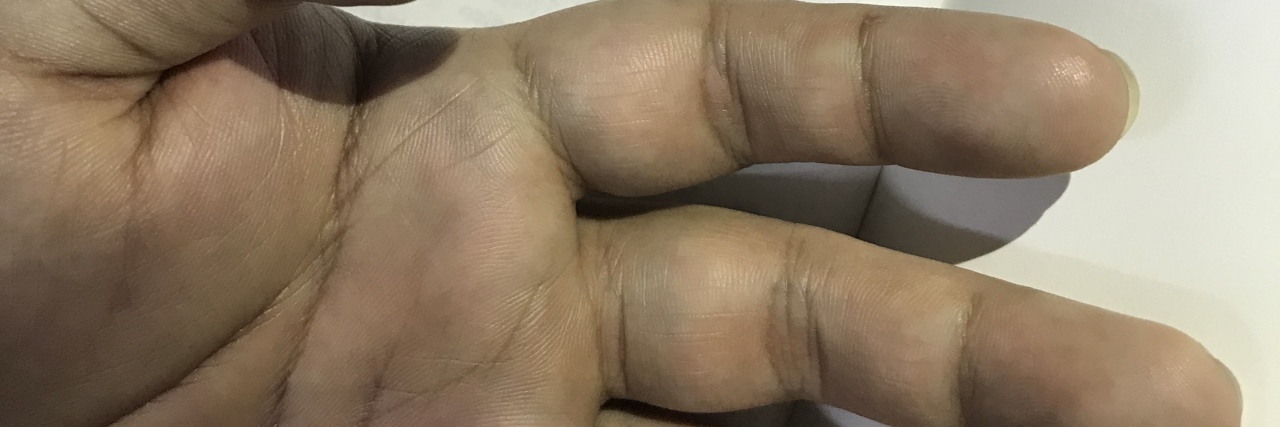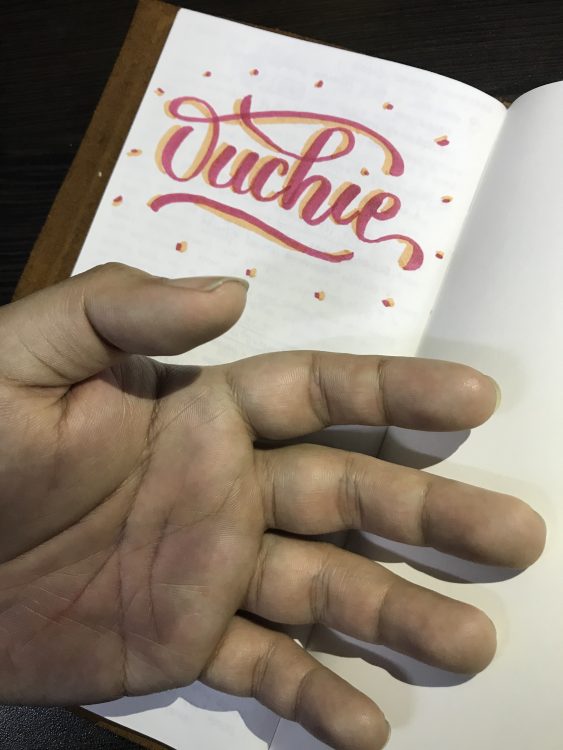My partner Jared is in pain. His hand has been bleeding for the past week.
No, he didn’t cut himself. The skin on his hand didn’t suddenly pop open and start gushing out blood at random (sorry for the graphic mental image). Yes, this was a random injury. He didn’t do anything to exert force on, or using, his hand, but it happened. He literally just woke up with his hand in pain.
It’s just one of the things that happen to people with hemophilia on a regular basis. It looks scary to most people. That’s understandable. It’s not every day you see a guy with a giant bruise in the palm of their hand. In fact, this whole week in the office, our coworkers had been telling him to go to the doctor. To which he would answer, “no need,” or “well, my dad’s a doctor.”
True enough, his dad is a doctor with over 20 years of experience handling his own son’s condition. He may not be a hematologist (blood doctor), but after all those years of looking after Jared he already knows a great deal about managing hemophilia (and hemophilia-related injuries). When he saw the injury, he wondered where it might have come from — but he didn’t say anything about a transfusion.
Usually Jared gets infusions of his missing clotting factor whenever he gets a bleed, but for this particular bleed, he didn’t need any (yet). A hand bleed may look grotesque, but it isn’t scary or life-threatening.
But it sure is painful.
It’s OK to Be In Pain
Jared and I were talking yesterday (as we always do) and we discussed how it might be a good thing to expose children to pain from a very young age. I’m not just talking about kids with chronic illness — I actually mean all children. A lot of parents like to shield their kids from unpleasant experiences — and for a good reason. Very young minds may still not have the capacity to process hurtful experiences. Therefore, putting them through such experiences at a very early age may result in lifelong scars.
However, one potentially harmful consequence of this is that kids end up viewing pain as the enemy. Though the parent’s original intention might have come out of sheer kindness and compassion, they become inadvertently conditioned to see pain as “bad” and to shirk away from it, or fear anything that may potentially cause pain.
What they don’t realize is that pain doesn’t necessarily have to be bad all the time. Evolutionarily speaking, it may have been designed as a way for humans to avoid unpleasant or life-threatening situations. But pain does not automatically translate to “wrong,” or lead to a terrible outcome (or worse, death). Pain is a feeling. It’s a response to a series of cues that our bodies and minds are conditioned to interpret as “leading to a potentially undesirable outcome,” but there is still no guarantee that they will truly lead there.
On the upside, pain can give us a hint as to which direction we ought to take, from where we are at present that’s causing us to feel this way. Pain can be a sign that we need to change what we’re doing (whether it means refraining from doing reckless things that can possibly result in injuries, or just taking a rest from stressful events because we might not realize how overworked we are).
You can only ever feel pain for as long as you’re alive.
Pain is OK — to the extent that it’s a sign you’re thriving.
Follow our journey on Or Simply Cza.
We want to hear your story. Become a Mighty contributor here.


